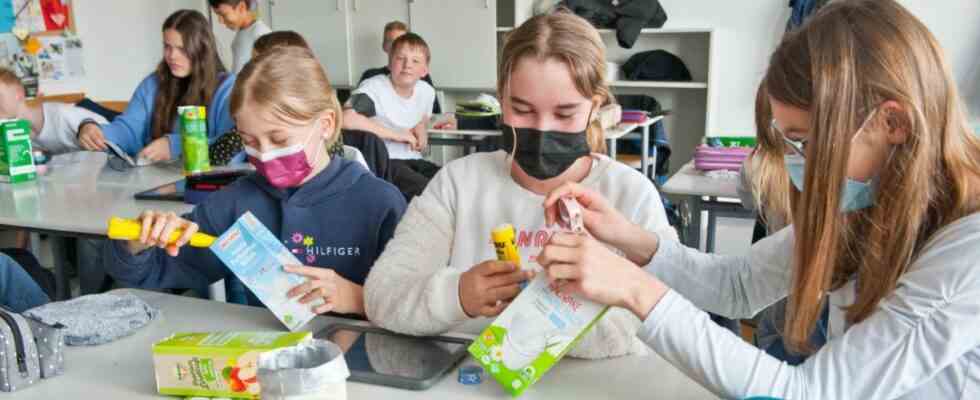Why did he once build war machines, even though he hated war so much? The culture day at the Gymnasium Kirchseeon is all about Leonardo da Vinci in the fifth grades. Instead of math, German and biology, the schoolchildren listen to an online reading by the children’s and youth book author Christine Schulz-Reiss about the world-famous polymath. You will learn about the war machines he built. One of the questions of this school day is why did he do it?
Was da Vinci doing it for financial gain? Or to prove the suitability of his thoughts on mechanics? Or for completely different reasons? The children also learn about the legends surrounding his important painting of the Mona Lisa and that he may have spoken Italian. It is quiet in the classroom, the children listen attentively and ask interested questions. Bundles of finger-thick branches lie on the floor next to their tables for two. What it’s all about? That, explains Sandra Reim, teacher in 5b, “should be a surprise”.
6a is about plastic waste. The workshop is called “Reduce, Reuse, Recycle”.
It’s culture day at the Gymnasium Kirchseeon, not only in the fifth grade. The regular lessons at the school are canceled once a year, says Christoph Müller – this year at the beginning of April. The music supervisor seems to be everywhere at once and seems enthusiastic about the project that is anchored in the curriculum. Cooperation with the teachers is essential – colleagues Ruta Dressler, Matthias Ott and Julia Reisinger in particular helped to organize the event. The program is diverse and adapted to the age groups, as shown by a tour of the classes.
6a is about plastic waste. “Reduce, Reuse, Recycle” is the name of the workshop in which the children have acquired knowledge from selected texts and video clips, make posters and present them to the class. It’s about how plastic gets into the world’s oceans – from the Seeoner Bach into larger rivers, further into the Black and Mediterranean Seas and finally into the Atlantic Ocean. You will learn that microplastics can even be found in clothing and shampoo and what health risks it poses.
Jonas and Paul make objects out of sticks and are inspired by Leonardo da Vinci.
(Photo: Christian Endt)
Plastic takes 450 years to decompose into microplastics, but never completely disappears, reports one group. Production began in 1950, which means that plastic produced up to now has not yet decomposed and the process will take a long time, also because production is ongoing, explains Stefan Obermaier, teacher and member of the school’s environmental team. However, a realistic look at plastic is important to him: “We don’t want to demonize anything here,” he says. It’s about “promoting awareness and critical questioning among children about the effects and alternatives of plastic”.
In the seventh grades, the fall of the wall is the central topic on culture day. Author Juliane Breinl is digitally involved: she read from her book “Mein Mauerfall” in the morning. Then the seventh graders solve different puzzles on tablets in escape room manner in groups to open a treasure chest. Emilia, Marie and Fanny have already cracked the code – “it was fun,” they say, adding with a laugh, “even if we could google the questions.”
The eighth grades deal with the stars in art. The art historian Anja Dollinger has been invited to give a virtual lecture. It explains how differently stars have been seen by scientists through the ages. Then let the kids get creative. Whether they write poems, paint or model is up to them. Molana and Annabelle have chosen to paint. They found the day interesting but “would have liked to have gone somewhere”. Just like grades nine, ten and eleven – who take a city tour of Munich, visit the concentration camp in Dachau and a musical. Only the twelfth graders have to do without the culture day, as they write their Abitur shortly after the Easter holidays.
At midday, the fifth graders and their Da Vinci question reveal what the bundles of branches were all about: they built flying models. Nicolas and the person sitting next to him followed da Vinci’s sketches as a guide: They built “a boat that has wings, with proper wings” from the branches and baking paper. When everyone is busy working, it is now louder than in the morning and the children seem to like the relaxed atmosphere, which Nicolas also confirms: “I found the day beautiful because it was exciting – and without homework.” Why da Vinci built war machines back then will remain his secret.

